I was in Los Angeles last week. I was staying in Hollywood, which, it turns out, is the place to be. While there I met up with design writer Alissa Walker (of UnBeige)—she lives just a short walk from my hotel (though when I went over to see her I drove … because it’s LA, you know, and I didn’t rent a giant Caddy just so I could hoof it all over town). Anyway, Alissa and I decided to be really Hollywood and go do a little star watching.
At the newly refurbished and re-opened Griffith Observatory, that is. An observatory in LA seems like a weird idea to me, but much to my surprise, it was high on a hill and we got to look down on all the pollution instead of up through it, so that was a relief. And what a view it was. They’ve got this big-ass ol’ telescope up there and … well we can see all sorts of stuff through that thing.
I’d like to dream
My troubles all away
On a bed of California stars
– Woody Guthrie (/Wilco)

Stars. You know, when we think of stars we tend to think of one or two shapes, a couple of different sizes, and that’s about it, right? How wrong that is. Stars come in all sorts of different configurations, colours and shapes. Sometimes you’re not even sure … is that thing a star? But once you get your head around it, if it’s bright and twinkly and has points, it’s probably a star.
Twinkle, twinkle little star
How I wonder what you are

Above are a 3-pointed star and two 4-pointed stars. When counting points on a star, just count the big ones that stick out; everything else is just stardust. The 3-pointed star is named Envy#542766 (yes, I know, it sounds like a perfume), and it exists in the Triangulum Galaxy. The red star is called Frambesia and the white one is Kornephoros. Pretty.
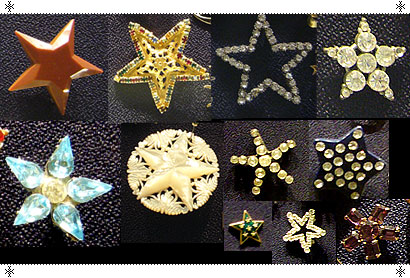
Most stars have five points. This is the shape we tend to think of when we think “star”. But even here, note the differences in appearance in even a simple 5-pointed star. Surprising, isn’t it? The blue one at bottom left is the North Star (Polaris), by the way. Who’d have thought that such an important star would be so simple? Well, it’s only important to us, not to the rest of the universe. Humans are incredibly egocentric.
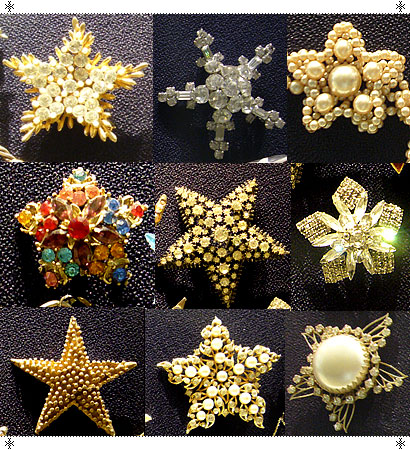
When stars were still just the holes to heaven, mmm
Man and there were so many fewer questions
– Jack Johnson
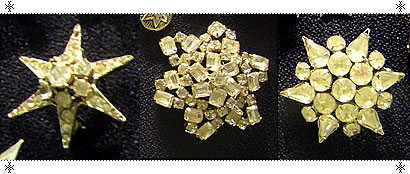
The 6-pointed star is another common shape. Here are three of my favourites. They’re all in our galaxy—like, practically next door. These are Tintinnabula, Burlesque and Bill.
Of the stars we’ve seen so far, note how regular and symmetrical they are. Most stars have this external harmony: they have a kind of order to them. While they may display an exhuberance, they’re structurally conservative. Not all stars are this way.
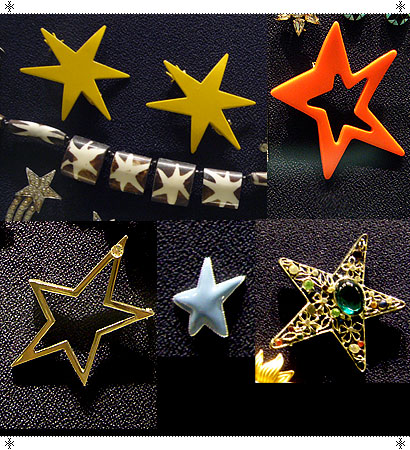
Some stars are a little bit out of whack, which is why astronomers call them “wacky stars.” Yes, that’s a scientific term. Note how these stars have some points longer than others, and their sides don’t line up. These stars are unstable. Note the two at top left are Pollux and Castor and, with the 4 smaller ones underneath, can be seen in the constellation Gemini.
No one can stop us now
’Cause we are all made of stars
– Moby

Seven-pointed stars are very rare, and the nice man at the observatory took quite a while to find these two for us. The one on the left, Kenjutsu, is a wacky 7-pointed star. On the right, Xiphopagus. You can just see a bit of the moon coming into the picture, and we’re going to see another view of that again in a bit.
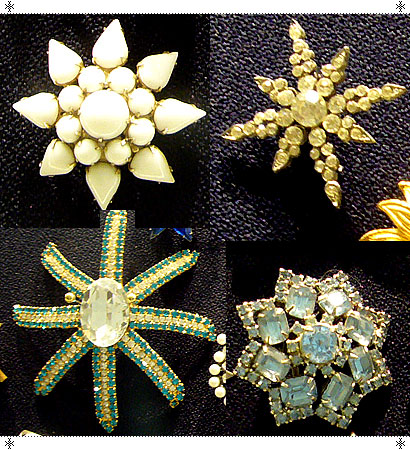
Starry, starry night ,
Flaming flowers that brightly blaze ,
Swirling clouds and violet haze
– Don Mclean
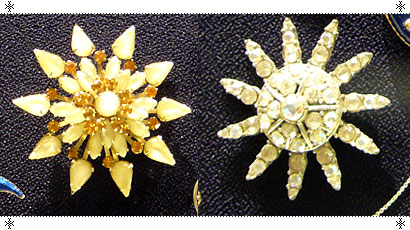
We could not find any 9-pointed stars. Mr. Astronomer (Not his name! I was so impolite, and forgot to get his name) said he’s seen some, but just couldn’t find any the day we were there. He did find these 10- and … 11-pointed stars, though!! He’d never seen the 11-pointed star before, so we named it right then and there “Bantjes.” (Sorry Alissa.) I think it’s the most beautiful star in the galaxy.
It’s like our visit to the moon or to that other star
I guess you go for nothing if you really want to go that far.
– Leonard Cohen
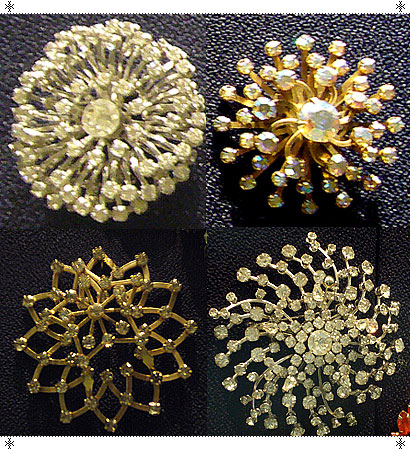
Those aren’t stars, those are star clusters. Sometimes you think you’re looking at a single star, but really it’s a whole group of little stars collected together in a small space.
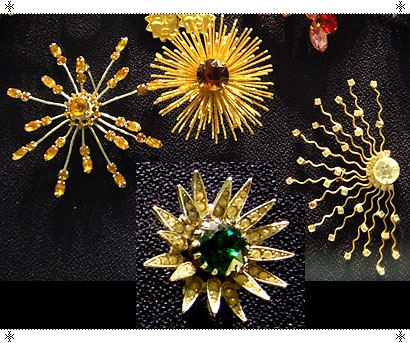
And those are starbursts. Not that kind of starburst, silly, these are the good kind! These are stars with a multitude of extra long rays … they’re actually exploding! In these images you can even see the chunks of the original star that are flying off from the core. They’re incredibly exciting, which is why we use them in advertising. That Griffith telescope is amazing.
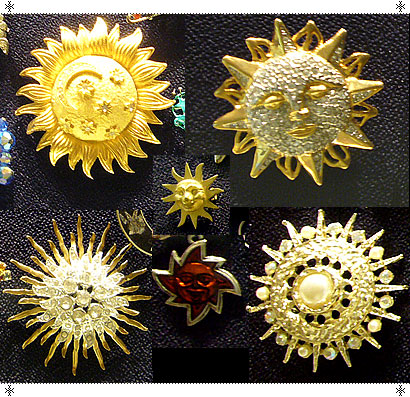
Most stars are actually suns, but here are some images of our very own sun: the star that our planet revolves around. At the observatory they have a special telescope called a Coeloscope (not to be confused with a Coelacanth), and it can look directly at the sun, even on a bright, scorching hot day, like the day we were there. Depending on the filters they use to view it, the sun can appear very different. Above are a few views. Note the little image where it looks like our sun is a red dwarf. Our sun is not a red dwarf! We would be in serious shit if it was. No, that’s just a view of it in infrared light.
When the sun goes nova
and the world turns over
I don’t want to be alone, so baby come on home
– Bruce Cockburn

The moon was in its crescent phase while we were there. Here are some different views, where you can clearly see the craters. The one in the middle at the bottom is a bit of a fake; it’s been “enhanced” with hand tinting to bring out certain special things that moon scientists are interested in. But again, it’s amazing how recognizable it is, despite the slightly different forms: you’d be a lunatic to think it was a C, or insect pincers or a half eaten doughnut.
Pink, pink, pink, pink, pink moon
Pink, pink, pink, pink, pink moon.
- Nick Drake

Here’s the “man” in the moon. We didn’t actually see this, these are archival photos. I don’t know what the fuck.
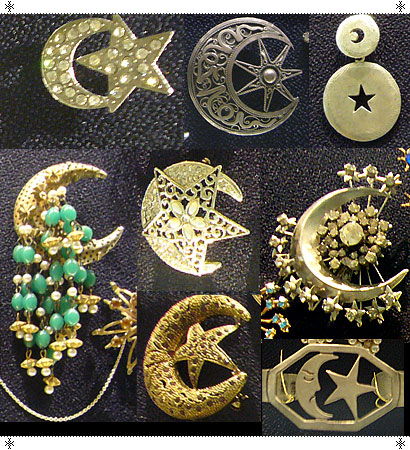
Now this is really interesting. Mr. Astronomer told us that on very rare occasions, due to a disturbance in the atmosphere, it can appear as though a star is passing in front of the moon. This is, of course, impossible as stars are big and way further away than the moon. But these exciting images from the Griffith telescope show this phenomenon clearly. Sometimes the illusion is so intense it appears as though a star actually eclipses the moon! The middle image at the top is our old friend Xiphopagus, the 7-pointed star. To the right of it is a double-optical shift; middle row, on the right is not a starburst, but just a really sparkly star interfering with the moon rays for this amazing special effect. And on the far left, check it out, that is a super rare image taken this summer when it was really hot down here on earth, and remember we had all those forest fires? Yeah, well that’s the cheese melting right off the moon. I kid you not.
I was over the moon, I asked her back to my place
And then I married the monster from outer space
- John Cooper Clarke

There’s all sorts of other twinkly bits up there in the sky. To the naked eye, they all look much the same, but with the Griffith telescope you can easily see that some of them are not pointy at all, but are round and smooth—they’re planets. This is a time-lapse image of everyone’s favourite planet, Saturn.
I’m going back to Saturn where the rings all glow
Rainbow, moonbeams and orange snow
– Stevie Wonder

Favourite, that is, next to Earth. This image wasn’t taken from the Griffith Observatory … we can’t see ourselves … there’s no big mirror out there in space (not yet, anyway). No, this was taken from the Hubble telescope. It’s two images, showing both sides of our planet, but note that it also clearly shows the huge amount of space junk we have hanging off the bottom of the planet. This is bad news people, and a big warning sign to clean up our environment and fast. Y’all didn’t spend all that money on fancy equipment just to send it out into space and ignore the information it sends back. Someone send George Bush to this page. Space junk: evil, bad shit.
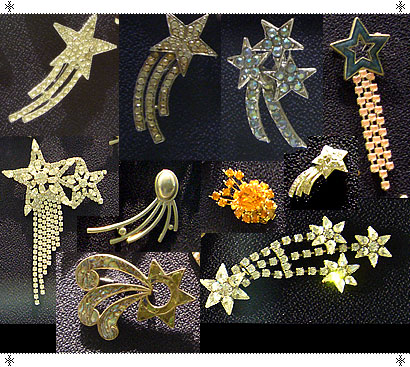
There’s lots of flotsam and jetsam flying around out there in space and not all of it was put there by us. We call these beautiful things shooting stars, but actually they’re meteorites. Sometimes they fall to earth and wipe out trailer parks and stuff, but that’s pretty rare. By the time they get here, they’re just ugly hunks of rock or metal, but out there in space, well look at that, they are just beautiful.
Seen a shooting star tonight
And I thought of you.
– Bob Dylan

This is a comet.
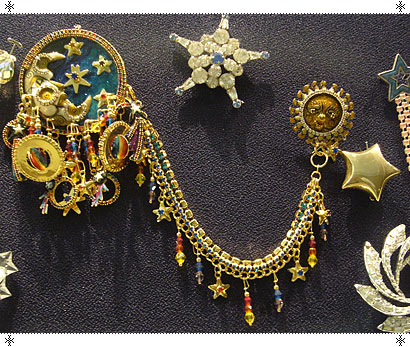
And this is a UFO. Which does not mean it’s space aliens, it just means nobody knows what it is.
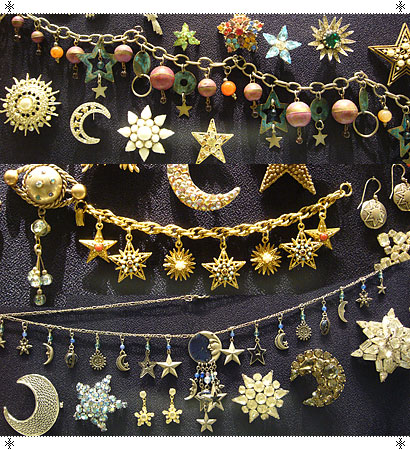
Now the funny thing about this stuff in space is that they tend to hang around in lines. The one at the top is an asteroid belt, where they’re all floating around in orbit around our sun. Asteroids are just things too small to be called planets. Our 9th planet, Pluto, recently got downgraded to an asteroid. :(
Stars form in arms of a galaxy. Each arm is called a bracelet, like the one in the centre. And in our solar system, when the planets and moons all line up, it’s called a necklace.
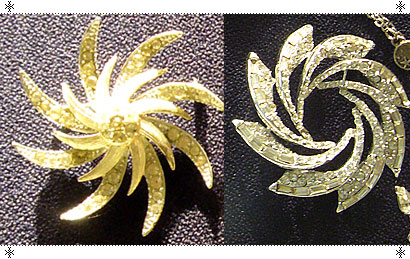
Speaking of galaxies, here are a couple of great shots. You can tell galaxies from star clusters because they’re much bigger and farther away, and, more importantly, they have those bracelets that spiral outwards from the center. It looks like they’re swirling round and round … sort of hypnotizing. These are the Sardonyx and Socialite galaxies.
What flying saucer did you come here on
What extraterrestrial planet are you from
You’re much more than life
You are from galaxy paradise
- Stevie Wonder

Now I’ve been saving the best for last, because this is totally new. Only since the telescope was refurbished and the observatory opened in the past two weeks have the observatory crew been able to realize some amazing new powers of the ’scope. Revealed here, for the very first time ever are these candid shots of the private life of the sun and the moon. On the left, here they are enjoying a little smooch—I’m not quite sure when they do this: I was afraid to ask. And on the right—uh oh, looks like maybe a lover’s spat. Which just goes to prove (and I mean prove, with science) that space is not heaven.
And that’s it! That’s what I saw at the Griffith Observatory in LA, on Nov. 8, 2006. I urge you all to go and see these amazing celestial bodies. Way better than the stars down on Hollywood Boulevard.All that is now
All that is gone
All that’s to come
and everything under the sun is in tune
but the sun is eclipsed by the moon.
- Roger Waters / Pink Floyd

With thanks to whoever created the obsessive and inspired celestial jewelery display at the Griffith Observatory.








Wow, I clearly need to get me to an observatory. I had no idea how much handwork went into crafting our universe; it's almost enough to make a man find religion!
Marian, your visual surveys rock: please keep it up.
"she thinks she missed the train to Mars,
On Nov.17.2006 at 01:10 PMshe's out back counting stars" Hum